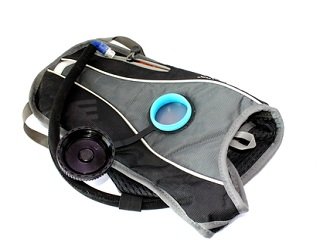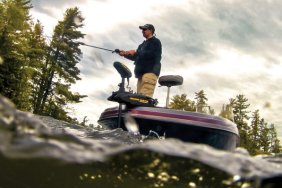 As I’ve discussed in previous articles, staying hydrated during any physical activity is vitally important, in terms of health and safety. You can fight dehydration on the trail during any activity by making sure you have enough water with you. It can be difficult, though, to carry multiple bottles when you’re biking or running, which is where hydration packs come in handy. Today, I’ve provided a few tips on how to choose the right hydration pack for your activity!
As I’ve discussed in previous articles, staying hydrated during any physical activity is vitally important, in terms of health and safety. You can fight dehydration on the trail during any activity by making sure you have enough water with you. It can be difficult, though, to carry multiple bottles when you’re biking or running, which is where hydration packs come in handy. Today, I’ve provided a few tips on how to choose the right hydration pack for your activity!
Day hikers and backpackers tend to go with a reservoir that can fit into a sleeve within their own backpack. Most backpacks also have a portal through which you can fit a sip tube, which makes choosing a reservoir a simple matter of finding one that isn’t too big for your pack’s sleeve.
Runners and walkers won’t want a large pack that can throw off their balance, so a waistpack or minimalist hydration pack is the better option. These smaller packs emphasize low weight and a smaller size, and have just enough cargo space to hold car keys, gel packs, or a lightweight wind jacket.
Cyclists can fall into a few different categories, each with their own preference in pack size. If you’re a road cyclist who prefers speed over pack size, then I’d go with a small, slim hydration pack that offers a tight, sleek fit that won’t hinder your cycling. However, if distance and recreational cycling is your thing, then it might be smart to go with a hydration pack that can hold more water and offers more storage options for other items. Mountain bikers tend to go with larger packs that offer ample cargo capacity. The extra storage comes in handy when you need to carry emergency gear or other trail-oriented items.
If all you need is a reservoir, then your options boil down to size. Minimalists, bike commuters, or even kids will most likely want a 1-1.5 liter reservoir. This size is perfect for those who don’t want to carry a lot of weight. 2L reservoirs tend to be the most popular choice among outdoorsmen, due to their balance between size and weight, as well as the ample amount of water they hold. Then there are those outdoorsmen who refuse to stop for anything or those who aren’t around a water source. This is where a 3L reservoir comes in handy. This much water can become cumbersome, of course, so keep that in mind when using a reservoir this size.
Hydration packs are a great way to transport water while hiking, cycling, or running. They come in a variety of shapes and sizes to suit many different activities, as well as offer varying storage options. Choosing the right hydration pack for your activity can mean better stability, increased comfort, and ample water for the demands you’ll face. Hopefully, the tips outlined above will help you choose the right one for your needs.








